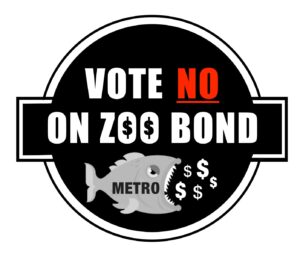The zoo is using falsehoods and half-truths to counter our campaign. Here is our response to their common PR talking points you may have come across.
Thank you for your note. It sounds like you have received some incorrect information about Chendra, and I’m grateful for the chance to set the story straight.
FOZE is committed to truth and transparency. All our claims are based on verifiable facts and we welcome cross-checking of our references.
I’m not sure how much you know about her, but Chendra is a rescue animal who had an extremely hard start to life. She was found wandering — orphaned, alone, and hungry — near a palm oil plantation in Borneo. She had wounds on her front legs and her left eye, leaving her blind in that eye. Because she was so young and could not be reunited with her herd or released back into the wild, the Sabah government reached out to us, and we were able to give her a home here in 1999.
The zoo conveniently omits mentioning that Chendra was loaned to them for the purpose of breeding (and not rescue), as shown in her 1999 loan agreement, a snippet included below
The zoo also doesn’t explain why they took the trouble of moving an elephant over 8,000 miles if the goal is just to rescue her. Were there no other zoos closer by? The truth is that in the 1990’s, the zoo’s elephant breeding program was undergoing a failure, and as North America’s first Borneo elephant, Chendra was a prize catch for breeding.
She has now known Rose-Tu and Sung-Surin for more than two decades, and helped raise Rose’s kids. She has especially taken to the zoo's new Elephant Lands habitat, which is considered one of the best in the country.
The zoo provides no evidence that the other elephants accepted Chendra. In fact, as a physically smaller Borneo elephant, visitors often found her to be bullied by the others. The zoo also provides no evidence for the Elephant Lands habitat to be considered “best” in anything. We have a thoroughly researched infographic debunking claims on Elephant Lands.
Here is a video that tells Chendra’s story in more detail: https://www.youtube.com/watch?v=8qs3L9EFVuE. Though we are honored to be entrusted with her care, Chendra belongs to the government of Sabah, Malaysia, not the Oregon Zoo. Here is a piece written by Dr. Sen Nathan, assistant director of the Sabah Wildlife Department, that explains why she is here: https://www.oregonlive.com/opinion/index.ssf/2018/10/opinion_removing_chendra_from.html I hope this information is helpful. Sincerely, Hova Najarian
The video is a slickly produced narrative of half-truth. It is telling that the zoo presents no explanation on Chendra’s tuberculosis that has spread to her from four other elephants (of which three are dead), her sterotypic behavior, her anemia, her foot problems and obesity resulting from limited mobility, her tragic miscarriage and the deaths of her companions to various diseases. Here is just a snippet of her chronic issues observed by the veterinarian when she suffered a miscarriage (click to enlarge).
As for Chendra’s ownership, her transfer agreement says she is on loan for the purpose of breeding. The zoo themselves have admitted that Chendra will not be able to breed successfully as she is too old to go through a pregnancy, thus nullifying the reason for her loan. With the transfer agreement being moot, citing her ownership now as a way to avoid discussing her options is disingenuous and misleading. We urge the zoo to respect public opinion by engaging in a fact-based discussion on Chendra’s future.
Our rebuttal of Dr. Sen Nathan’s piece is here.




